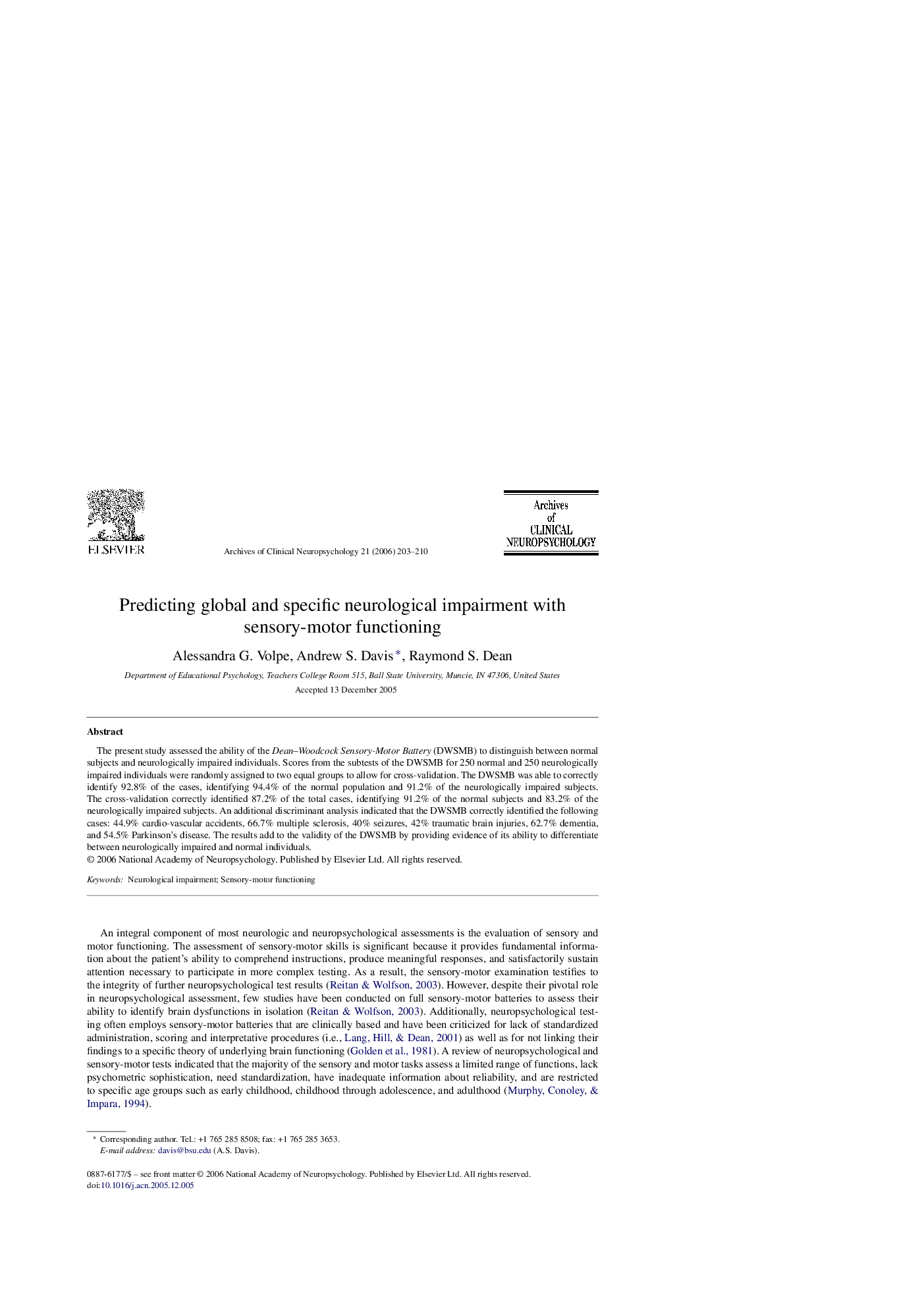| Article ID | Journal | Published Year | Pages | File Type |
|---|---|---|---|---|
| 901062 | Archives of Clinical Neuropsychology | 2006 | 8 Pages |
The present study assessed the ability of the Dean–Woodcock Sensory-Motor Battery (DWSMB) to distinguish between normal subjects and neurologically impaired individuals. Scores from the subtests of the DWSMB for 250 normal and 250 neurologically impaired individuals were randomly assigned to two equal groups to allow for cross-validation. The DWSMB was able to correctly identify 92.8% of the cases, identifying 94.4% of the normal population and 91.2% of the neurologically impaired subjects. The cross-validation correctly identified 87.2% of the total cases, identifying 91.2% of the normal subjects and 83.2% of the neurologically impaired subjects. An additional discriminant analysis indicated that the DWSMB correctly identified the following cases: 44.9% cardio-vascular accidents, 66.7% multiple sclerosis, 40% seizures, 42% traumatic brain injuries, 62.7% dementia, and 54.5% Parkinson's disease. The results add to the validity of the DWSMB by providing evidence of its ability to differentiate between neurologically impaired and normal individuals.
